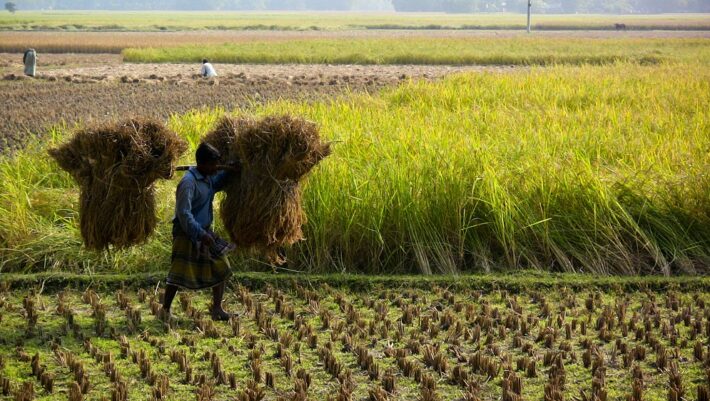50 years of rice breeding in Bangladesh: Genetic yield trends
- From
-
Published on
27.02.23
- Impact Area

In rice, there has been very limited research on genetic gain in Asia in general, and in Bangladesh, no studies have been done yet, even though rice is the main staple food. The aim of this study was to estimate the genetic gain for yield from the varieties released over the last 50 years for monsoon and winter rice ecosystems.
Over the last 50 years, the Bangladesh Rice Research Institute (BRRI) has developed and released new varieties and conducted variety trials to assess their performance. Within this period, the yield has increased due to improved management (agronomic trend) and plant breeding efforts (genetic trend). Genetic gain can be defined as the rate of increase in performance over a period of time that is achieved through artificial selection and breeding programs.
Over the last 10 to 15 years, there have been several studies assessing long-term genetic gains in different crop species in different countries. To quantify the increase in performance with time that is due to breeding, agronomic and genetic gain need to be dissected, which can be done using models that regress varietal performance for traits of interest on the year of release, in trials conducted across locations and years.
In “ERA” (method to assess yield improvements) studies, all varieties in the series are included in the same trials. Other models allow the genetic trends to be estimated from ongoing varietal performance trials that do not test all varieties in all years, but that retain a sufficient number of common checks from year to year to allow genetic and non-genetic trends to be estimated. It is to be expected that breeding and varietal selection are not the only relevant factors driving crop yield gains when comparing cultivar performance and genetic advances across several locations and years.
Related news
-

Scaling nutrition impact: Schools serve up High-Iron Beans
The Alliance of Bioversity International and the International Center for Tropical Agriculture (CIAT)03.07.25-
Nutrition, health & food security
Iron-rich beans can be integrated into consumers’ diets to enhance nutrition and cognitive functio…
Read more -
-

Shaping policy changes for a sustainable cropping system in Uttar Pradesh, India
International Rice Research Institute (IRRI)03.07.25-
Food security
by Dr. Proloy Deb and Dr. Swatantra Dubey The Central Plain region of Uttar Pradesh…
Read more -
-

Taste of progress: High-iron bean nutritional formulation draws international acclaim
The Alliance of Bioversity International and the International Center for Tropical Agriculture (CIAT)02.07.25-
Nutrition, health & food security
When Samuel Uwihanganye - a passionate advocate for children’s nutrition and community empowerment…
Read more -
